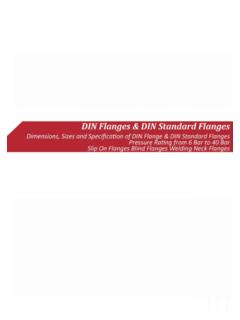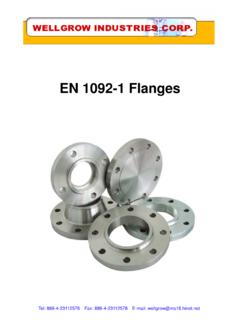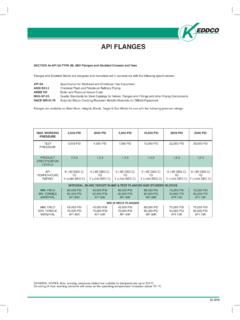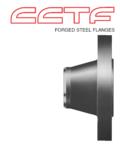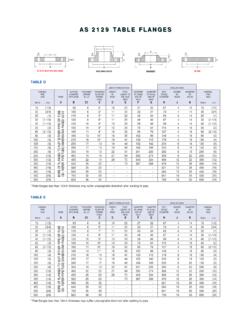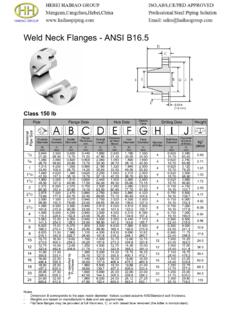Transcription of METHODS OF WELDING FLANGES TO PIPE - MultAlloy
1 SOCKET WELD X X TSOCKET WELD X X TTSLIP-ON X TT = 1 X = TMINTSLIP-ON X X TMETHODS OF WELDING FLANGES TO PIPEThe METHODS used in WELDING FLANGES to pipe will varyaccording to the type of flange and are basically the same asthose used in standard WELDING practices. For WELDING Neckand Lap Joint Stub and flange applications an initial root gapspacing between pipe and flange should be 1/16 to 1/8 . Thefirst bead must penetrate uniformly to the inside wall of theassembly thus assuring a strong joint. The final bead shouldbe built up above the pipe approximately 1/16 type preferred for severe servicesbecause it provides the greatest factor ofsafety and fatigue strength. These featuresmake this type of flange suitable for allpressures and temperatures for whichflanges are rated.
2 WELDING cannot causedistortion of the flange type assembly has a lower factor ofsafety in resisting pressure and fatigue thanwelding neck FLANGES . It is available for allpressures and temperatures for whichflanges are rated and because the flangeswivels freely on the stub, the alignment ofboth holes is independent from the weldingoperation. WELDING cannot cause distortion ofthe gasket Slip-On flange construction necessi-tates refacing after WELDING thus reducing theeconomic advantage this type flange hasover the WELDING neck type. It is used wheresmooth bores free from pockets are FLANGES are standard in the 150 300 lb. classes only and because of theirlower factor of safety in resisting pressureand fatigue, they are not recommended forservice above 750 FLANGESThis Slip-On flange is often chosen overWelding neck FLANGES because of its lowerinitial cost and is widely used because itrequires less accuracy in cutting pipe tolength and permits alignment of bolt holsand squaring of flange faces with lessdifficulty.
3 Refacing to repair warpage or weldspatter damage can be eliminated by theconstruction shown here if care is used whenwelding. Slip-On FLANGES are standard in 150lb. and 300 lb. classes only and are notrecommended for service above 750 those applications in which the runningof an internal weld is particularly difficult,this Socket Weld construction is recom-mended. In sizes 4 and smaller thisconstruction has approximately the sameresistance to internal pressure and fatigue asthe Slip-On FLANGES pictured WELD FLANGESThis sock weld construction eliminatesinternal pockets while avoiding warpagefrom WELDING heat and weld spatter damageto the flange face. It has the same resistanceto internal pressure as that of Slip-OnFlanges and better fatigue life.
4 Thisconstruction is recommended for all sizes in50 lb. and 300 lb. pressure neck FLANGESLAP JOINT STUB FLANGES
